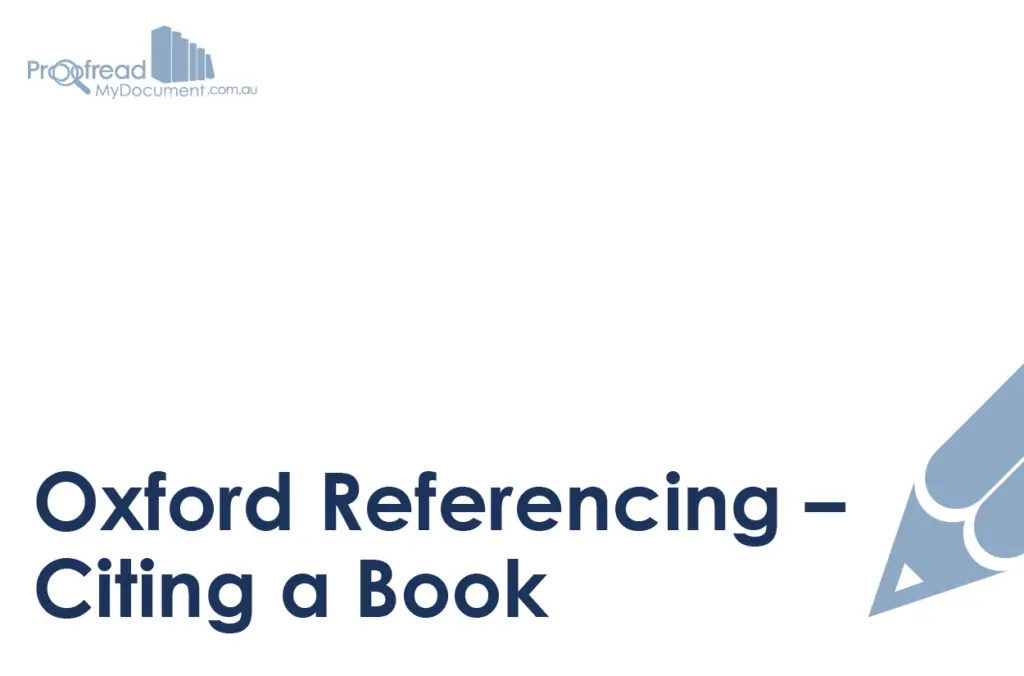As with citing an ebook, referencing a book with the Oxford referencing system requires two things: footnote citations and an entry in a bibliography.
The format of each is slightly different, so it’s important to pay attention when writing up references. And since Oxford referencing can vary, it’s vital to check the details with your supervisor or style guide!
Footnotes
Footnotes appear at the bottom of the page, highlighted with superscript numbers in the main body of your essay:
In the document, a citation would appear like this.1
The first time you reference a book, you should include the following information in the footnote:
n. Initial(s). Surname, Book Title, publisher, place of publication, year, page number(s).
The page numbers here refer to the specific section cited. Using this format, you should end up with a footnote that looks something like this:
1. H. Kane, Discovering Rome, Penguin Roundhouse, London, 2002, p. 10.
When referencing a book with two or three authors, meanwhile, you should use ‘&’ to separate the last two:
2. J. Jones, L. Larkin & W. Ellis, How to Beat the System, Harper Collins, New York, 2004, p. 16.
If the book has four or more authors, use ‘et al.’ after the first name to indicate the remaining authors (rather than writing them all out):
3. I. King et al., Psychology of the Human Mind, Continuum, London, 2010, p. 3.
Find this useful?
Subscribe to our newsletter and get writing tips from our editors straight to your inbox.
Subsequent Footnotes
After introducing a book for the first time, you can use a shorter form for repeat citations. Depending on the style guide you’re using, you have two options. But whichever one you choose, it’s important to maintain consistency throughout the document.
Latin Abbreviations
The first approach is to use ibid. (meaning ‘in the same place’) and op. cit. (short for the Latin phrase opere citato, meaning ‘in the work cited’). The former is used when you cite the same source twice in a row, while the latter is used when referring to a previously cited source:
4. P. Walker, London Fields: A Guide for the Uninitiated, Penguin Roundhouse, London, 2002, p. 10.
5. Ibid., p. 13.
6. T. Williams, Going the Distance, Harper Collins, New York, 2010, p. 34.
7. Walker, op. cit., p. 16.
Shortened Version
Alternatively, you could use an abbreviated citation, giving just the author’s surname and a page number. If you are citing more than one source by the same author, you should also provide a shortened version of the book’s title:
4. P. Walker, London Fields: A Guide for the Uninitiated, Penguin Roundhouse, London, 2002, p. 10.
5. T. Williams, Going the Distance, Harper Collins, New York, 2010, p. 34.
6. P. Walker, Urban Rambling, Penguin Roundhouse, London, 2010, p. 211.
7. Walker, London Fields, p. 10.
8. Williams, p. 35.
The Reference List
With Oxford referencing, all sources cited should be listed alphabetically by author surname at the end of the document.
The entry for a book here is similar to the first footnote, with a few tweaks. First, page numbers are not necessary. Second, the surname comes before the first initial(s):
Surname, Initial(s), Book Title, publisher, place of publication, year.
In practice, this would look something like the following:
Kane, H., Discovering Rome, Penguin Roundhouse, London, 2002.



